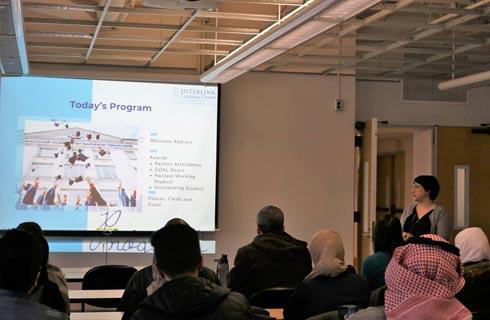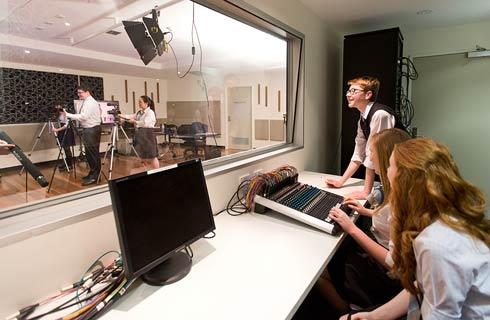Doctor of Philosophy in Computer Science - Literate Programming in Lisp

学历文凭
Ph.D.

专业院系
通用计算机编程

开学时间

课程时长

课程学费

国际学生入学条件
The candidate will have completed a bachelor’s degree at a regionally-accredited university or four-year college.
Official transcript of all previous college or university work
Successful applicants will usually have a grade point average (GPA) of at least 3.5 (on a 4.0 scale). Normally, no applicant will be considered who has less than a 3.0 or less than a B average in undergraduate computer science courses.
All GRE general scores are required by the School of Computing and Information Science. We do not require the subject test in computer science, although it may be submitted if desired.
International students will need to submit TOEFL (minimum 80), or Academic IELTS scores (with no score lower than 6.5 and a minimum average of 7.0).
IDP—雅思考试联合主办方

雅思考试总分
7.0
了解更多
- 雅思总分:7
- 托福网考总分:80
- 托福笔试总分:160
- 其他语言考试:Duolingo English Test - 105
CRICOS代码:
申请截止日期:请 与IDP联系 以获取详细信息。
课程简介
Literate programming (LP) is the practice of writing code and documentation as an integrated whole, with the view that computer programs are not only for implementation, but also communication. Typically, a programmer writes the program and documentation in a single file, usually interweaving the two in a meaningful way, then uses an LP tool such as noweb to produce either the documentation (with embedded code) or the code, which can then be compiled and run. The source file has a set of markup conventions that tell the LP tool how to typeset the documentation, usually producing output in a typesetting language such as LaTeX.<br><br>Interpreted languages<br>The usual model of literate programming, while very good for compiled languages, such as C, does not fit how users of interpreted languages, such as Lisp and Python, create, debug, and maintain code. An interpreted language facilitates rapid prototyping and incremental development in part by allowing portions of the program to be written or modified and evaluated by the interpreter separately from the rest. Typically, a programmer using an interpreted language will make changes to the source code and evaluate only the changed parts often directly from the file being changed, and often only a small portion of that file. Source-level debuggers and other parts of the language's integrated development environment (IDE) interact with the interpreter, the programmer, and the source file as well to help quickly identify and correct errors. In such an environment, injecting the additional step of untangling the LP source file to produce a Lisp or Python source file is cumbersome and counterproductive.<br><br>LP/Lisp<br>The LP/Lisp (Literate Programming for Lisp) project is an implementation of a literate programming tool for Lisp, implemented in Lisp. The Lisp source file is the LP source file: documentation lives in the comments. However, LP/Lisp is more than simply a comment extract-and-prettify program. It has most of the features of other LP tools to mark up documentation, reorder the source code and other chunks in the documentation, and so forth. The result is an LP system that seamlessly works with the way programmers interact with interpreted languages.
相关申请

预科

奖学金

实习机会

在校学习

跨境学习

校园授课-线上开始

在线/远程学习
本校相关课程
动物学理学硕士

学历文凭
Masters Degree
下一个开始日期
课程费用总额
野生动物生态学哲学博士

学历文凭
Ph.D.
下一个开始日期
课程费用总额
野生动物保护硕士

学历文凭
Masters Degree
下一个开始日期
课程费用总额
野生动物生态学理学硕士

学历文凭
Masters Degree
下一个开始日期
课程费用总额
西班牙语教学文学硕士

学历文凭
Masters Degree
下一个开始日期
课程费用总额
Master of Social Work

学历文凭
Masters Degree
下一个开始日期
课程费用总额
其他相关课程
计算机程序员高级文凭

德恒学院
泰晤士高等教育世界大学排名:

学历文凭
Bachelor Degree
下一个开始日期
课程费用总额
计算机程序员文凭

德恒学院
泰晤士高等教育世界大学排名:

学历文凭
Bachelor Degree
下一个开始日期
课程费用总额
计算机程序员文凭

汉博学院
泰晤士高等教育世界大学排名:

学历文凭
Bachelor Degree
下一个开始日期
课程费用总额
计算机程序员分析师高级文凭(合作社)

范莎学院
泰晤士高等教育世界大学排名:

学历文凭
Bachelor Degree
下一个开始日期
课程费用总额
安大略大学计算机程序分析师高级文凭(合作社)

乔治亚学院
泰晤士高等教育世界大学排名:

学历文凭
Bachelor Degree
下一个开始日期
课程费用总额
安大略大学计算机编程大专文凭(合作社)

乔治亚学院
泰晤士高等教育世界大学排名:

学历文凭
Bachelor Degree
下一个开始日期
课程费用总额





